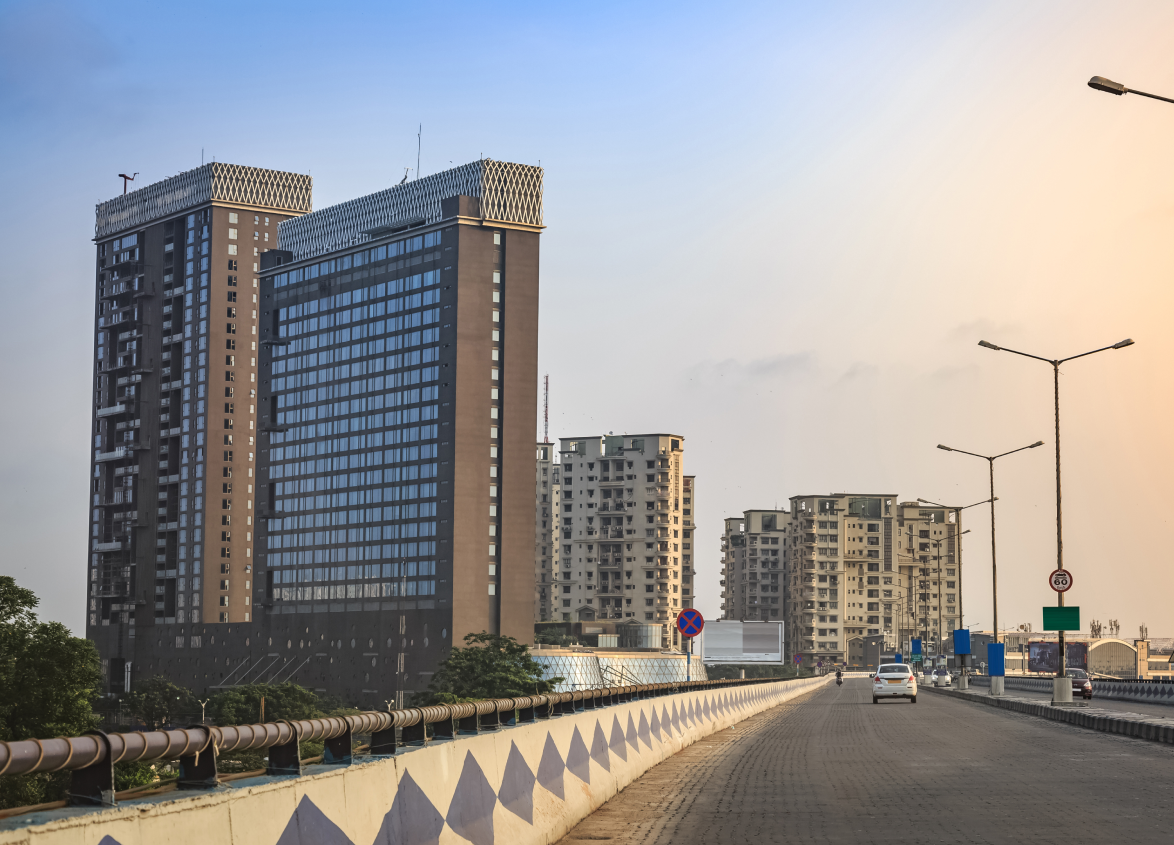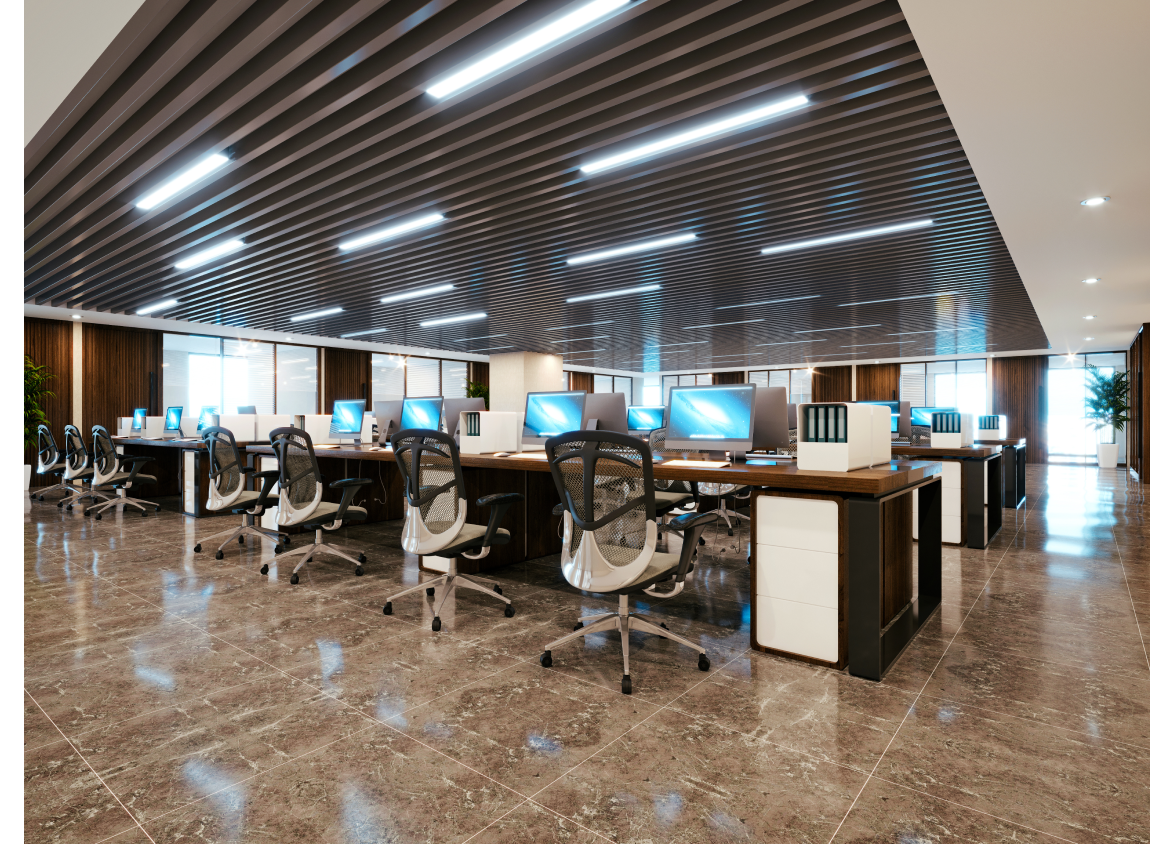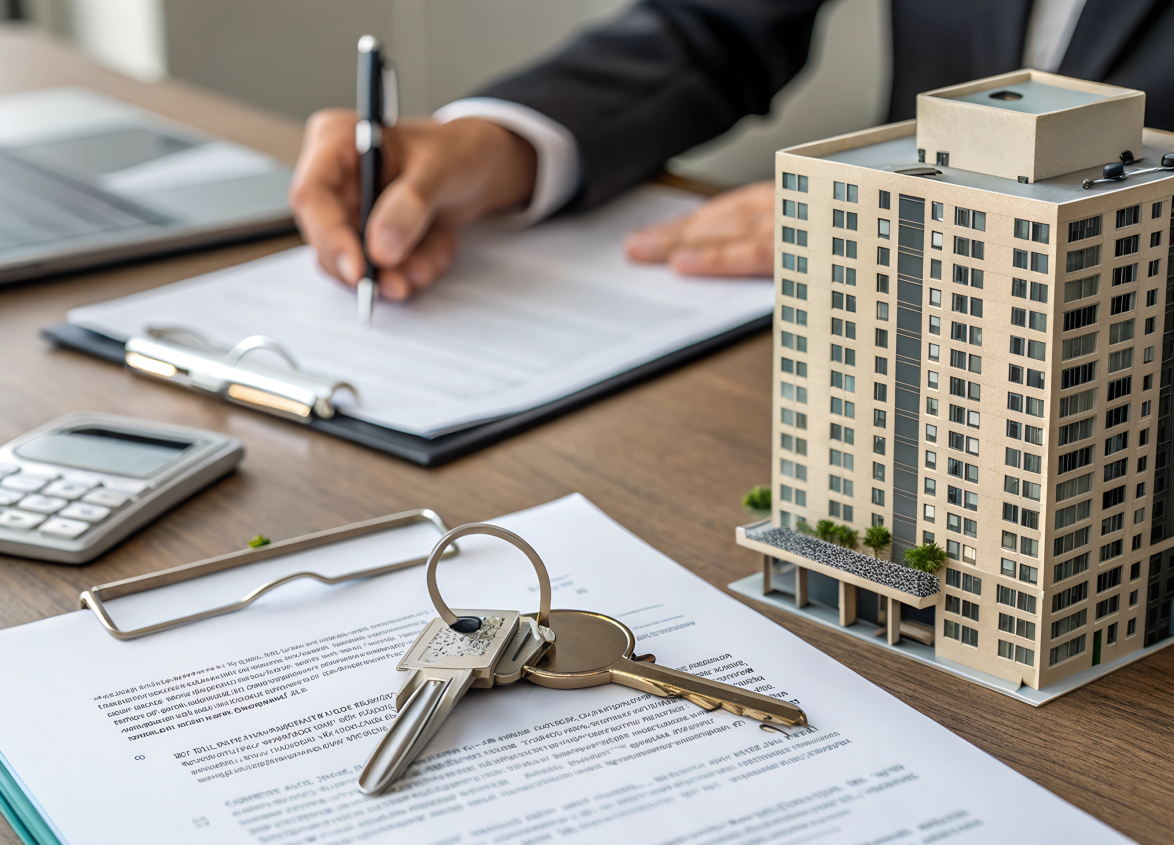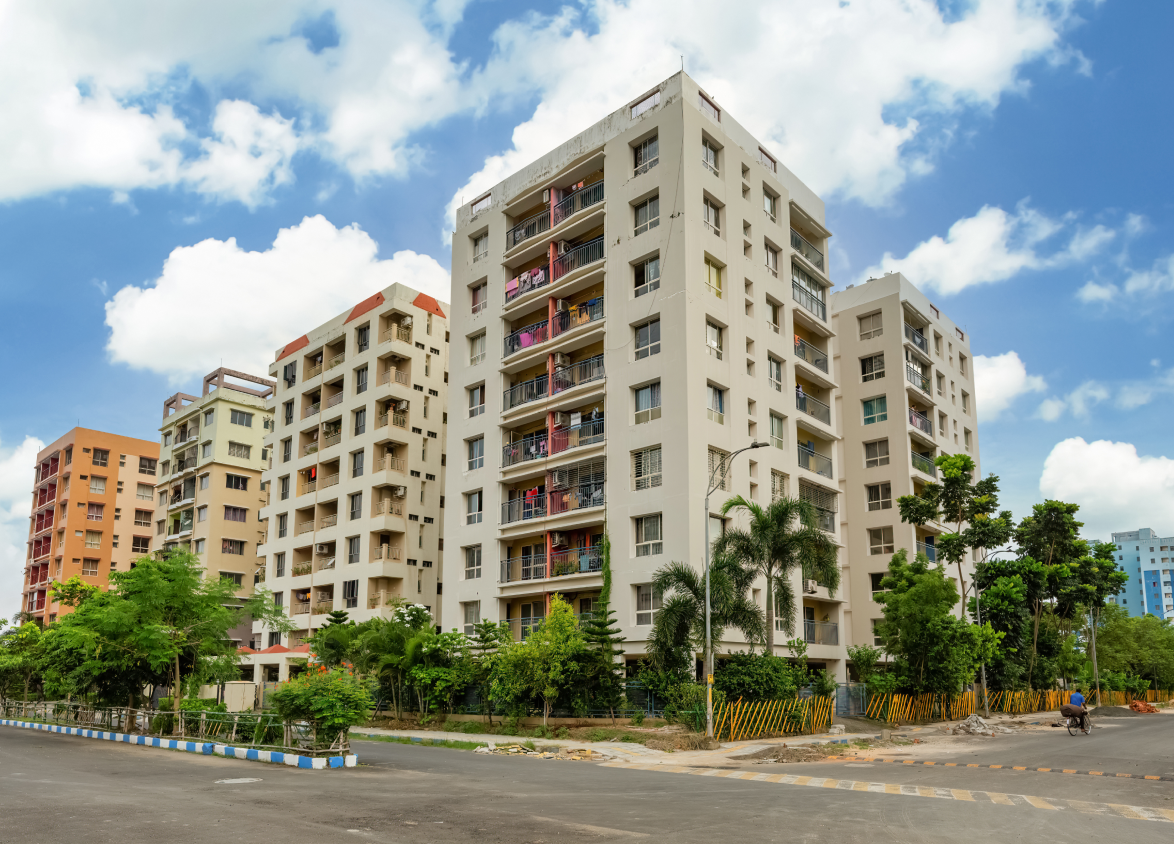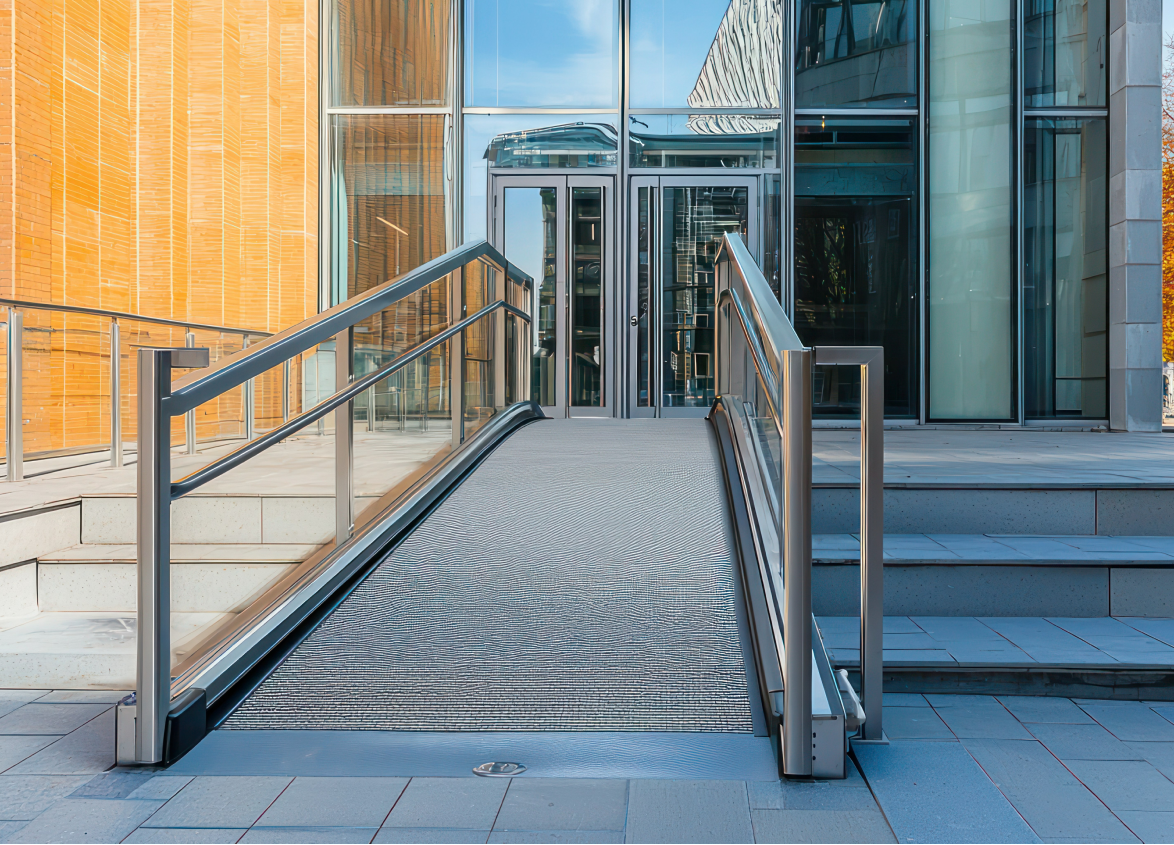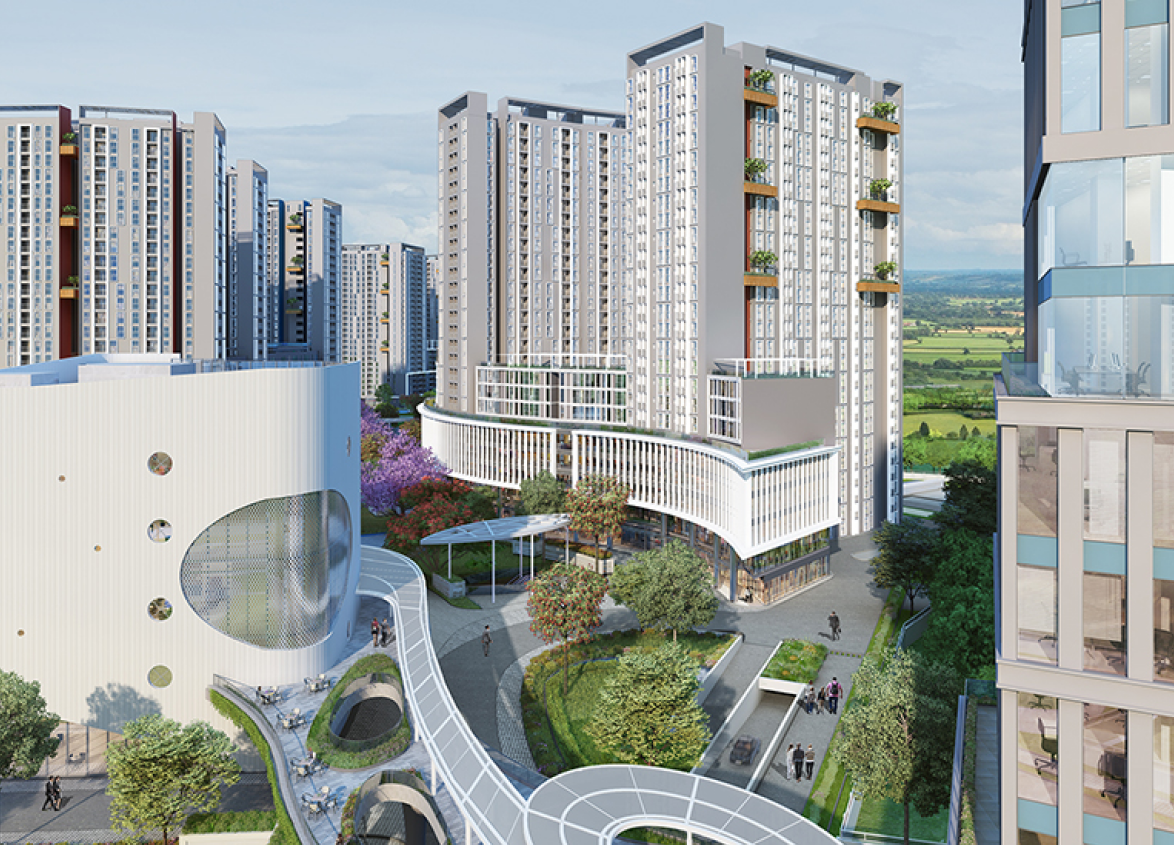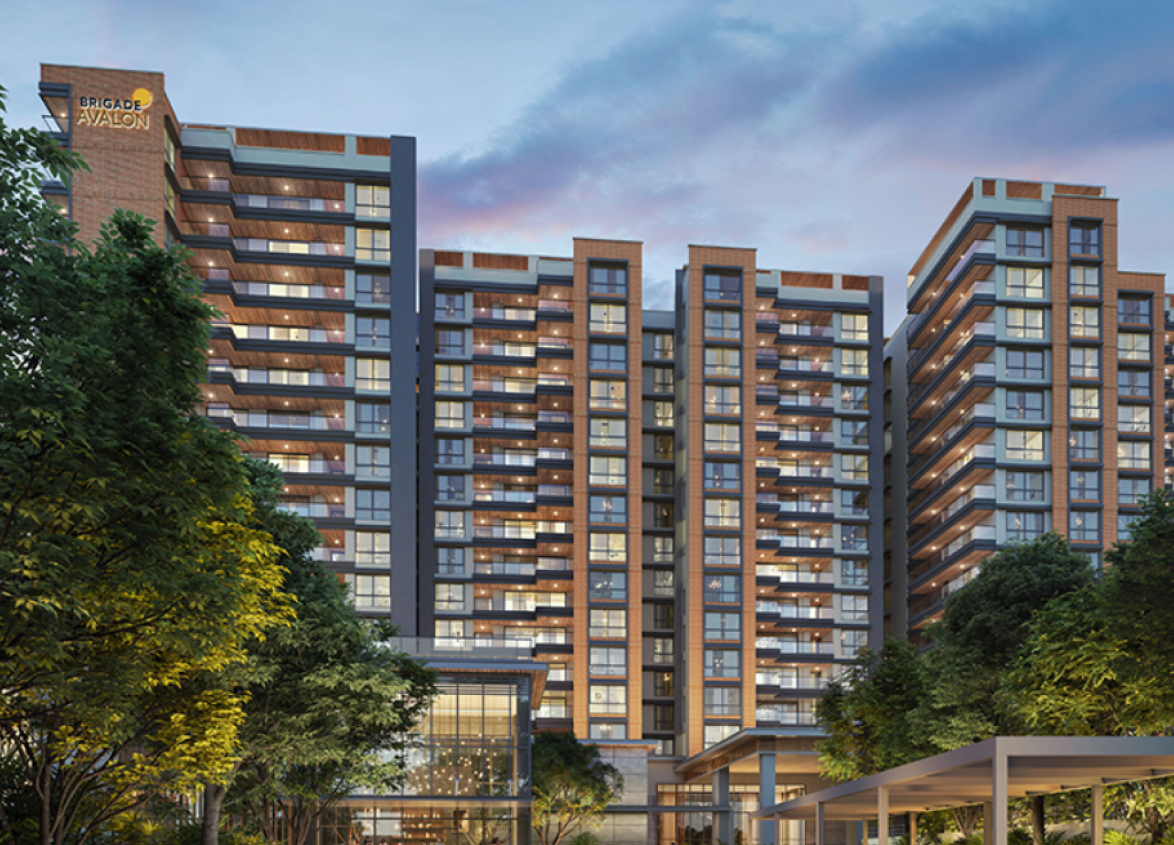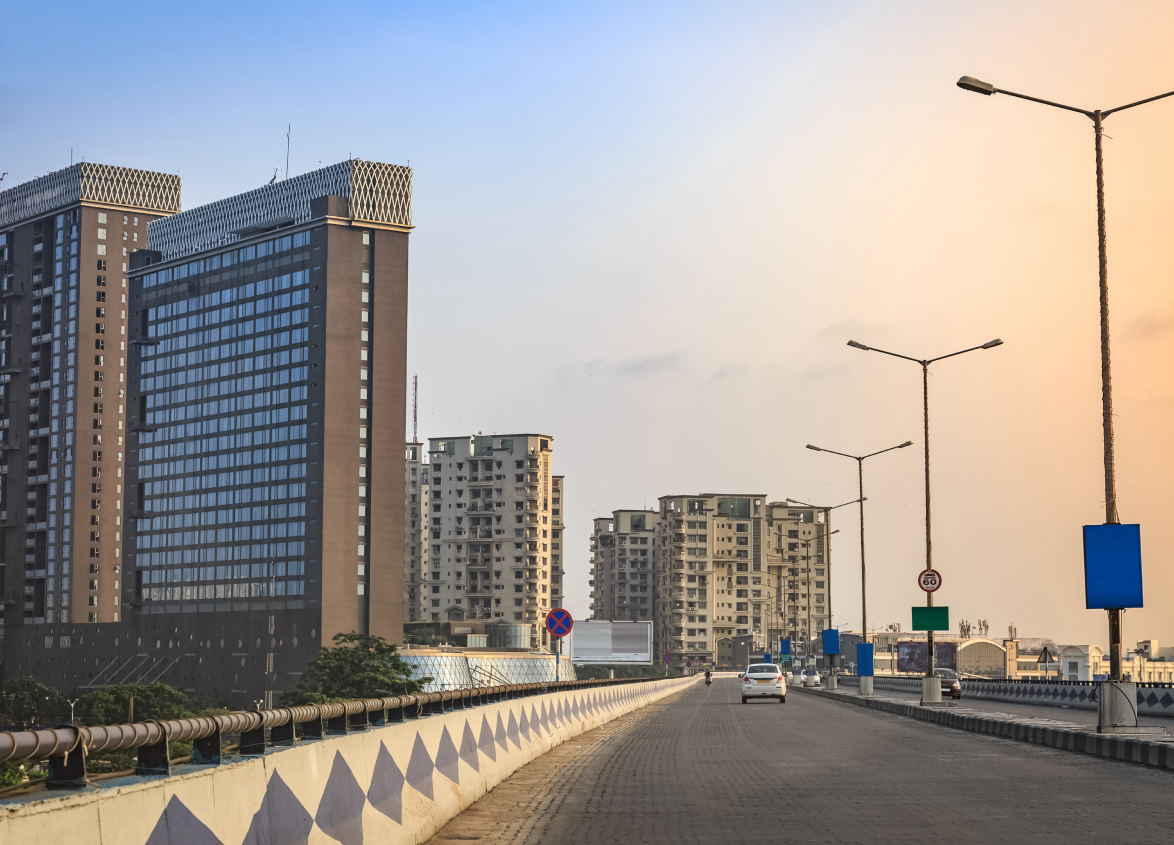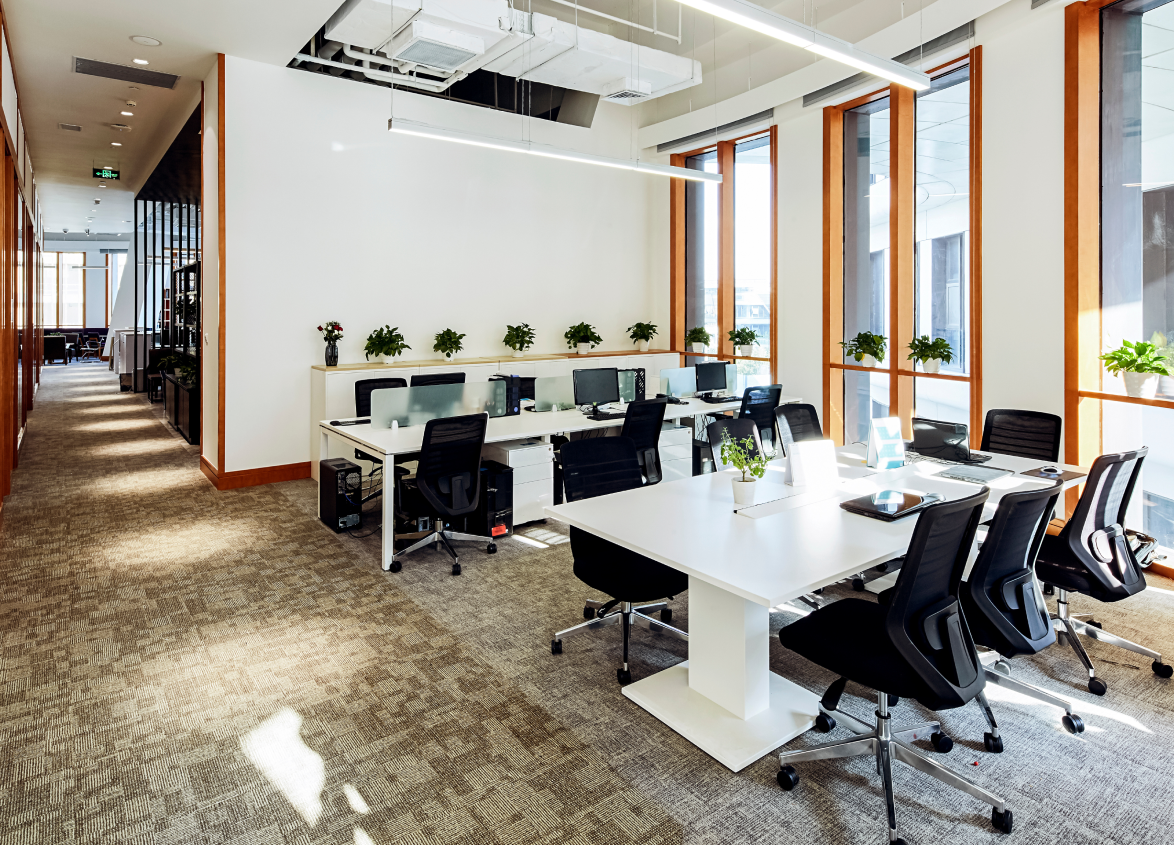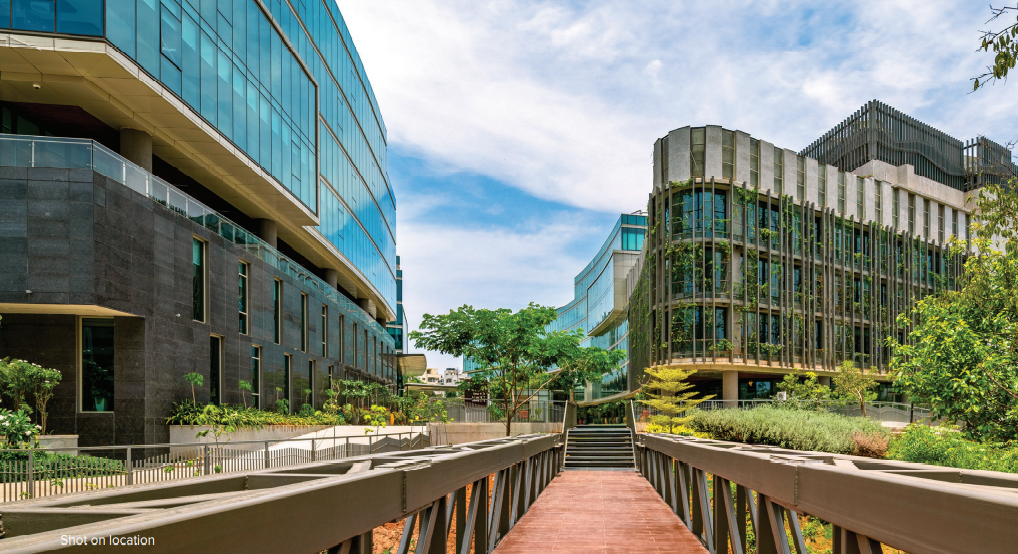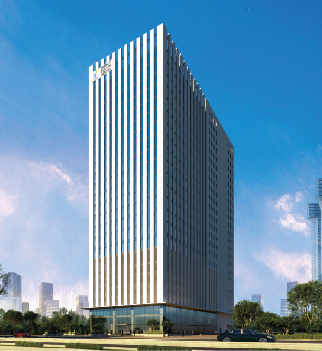
Retail
Leasing a Retail Space: Common Mistakes to Avoid and Best Practices for Success
May 14, 2025
Leasing office space is a significant milestone in the life of any business. Whether you are a new firm or an existing brand looking to expand, getting a good location and negotiating favourable leasing terms may make or ruin your business. However, most companies commit retail space leasing mistakes that lead to financial woes, operational problems and, in some cases, business failure.
In this blog, we will discuss the common errors in retail leasing and advise on avoiding pitfalls in leasing retail space. With years of experience in commercial real estate, Brigade offers insights to help businesses navigate leasing challenges and secure the perfect retail space.
Mistakes to avoid in commercial leasing
1. Underestimating the Total Cost of Leasing
When leasing retail space, too many business owners pay attention only to the base rent and pay no attention to the total occupancy cost. In addition to the basic monthly rent, other costs like maintenance fees, utilities, property taxes and insurance can drive a retailer's overhead. Landlords typically charge for Common Area Maintenance (CAM), which pays for the maintenance of common areas such as hallways, parking lots and security. Such expenses can vary, so it is important to scrutinise lease agreements closely to know one's financial responsibilities.
Lowballing these costs can pressure a business's finances, creating cash flow problems and unexpected deficits. For instance, if a store doesn't budget for increasing utility rates or rising property taxes, it may have difficulty paying operational costs. Unplanned maintenance or repair costs can also drain profits, particularly for small firms with limited budgets.
Suggested Read - Do's and Don'ts for Leasing or Buying a Property
To prevent fiscal mishaps, shopkeepers must prepare an in-depth budget encompassing all possible leasing charges. Hiring a real estate lawyer or a leasing specialist will help uncover hidden expenditures. Further, negotiating a fixed CAM charge lease or an expense cap lease will ensure more financial predictability. Budgeting carefully keeps a company financially secure and prevents unwelcome surprises.
2. Ignoring Lease Length and Renewal Options
Many business owners overlook the significance of lease length and renewal terms, which can greatly impact their flexibility and long-term success. A lease that is too short might require frequent relocations, disrupting business operations and customer retention. Conversely, a long-term lease with rigid terms can limit adaptability, making it difficult to respond to market changes, economic downturns, or expansion opportunities.
The duration of a lease determines how easily a business can adjust to evolving needs. For example, breaking a lease can be expensive if a retailer signs a 10-year lease but outgrows the space within five years. On the other hand, a short lease without renewal options may force a business to relocate, losing its customer base and incurring high moving costs.
To maintain business continuity, it’s essential to negotiate favourable renewal terms. Business owners should request renewal clauses that offer the first right to extend the lease at a predetermined rate. Additionally, negotiating a break clause allows businesses to exit the lease early under specific conditions. Seeking flexible terms ensures that businesses remain adaptable, protecting their long-term growth and financial stability.
3. Not Understanding Common Area Maintenance (CAM) Charges
One of the retail lease agreement mistakes is not understanding Common Area Maintenance (CAM) Charges. CAM charges refer to the costs shared by tenants for maintaining and operating shared spaces within a commercial property. These expenses typically cover janitorial services, security landscaping, parking lot maintenance, snow removal and even mall promotions. CAM charges are usually calculated based on the proportion of space a tenant leases within the property. Still, they can vary significantly depending on the lease terms and property management policies.
One of the biggest risks of CAM charges is their unpredictability. Property owners may increase CAM fees due to rising utility costs, unexpected repairs, or additional services, causing financial strain on tenants. If not properly accounted for, these fluctuating costs can disrupt a business’s operating budget, leading to unexpected financial burdens that eat into profits.
To avoid unforeseen expenses, tenants should negotiate a cap on CAM charges or request a fixed-rate CAM fee to ensure predictability. Additionally, requesting detailed breakdowns of expenses can prevent landlords from passing on unnecessary costs. Including audit rights in the lease allows tenants to verify charges and dispute unjustified increases, ensuring better financial control and stability.
4. Neglecting to Clarify Subletting and Assignment Rights
Subletting and assignment rights provide essential flexibility for businesses, especially in uncertain economic conditions or during expansion or downsizing. If a tenant decides to relocate, scale operations, or sell the business, having the right to sublet or assign the lease ensures they are not trapped in a long-term financial commitment. Without these rights clearly defined in the lease agreement, tenants may be unable to transfer the lease to another business, resulting in significant financial losses if they need to exit early.
Unexpected circumstances, such as economic downturns, shifts in market demand, or business restructuring, may require a tenant to find another party to take over their lease. A lease agreement restricting or prohibiting subletting and assignment can leave a business with no exit strategy, forcing them to continue paying rent even when operations have ceased. To mitigate this risk, tenants should negotiate clear subletting and assignment clauses, ensuring they can transfer their lease under reasonable conditions. They should also clarify whether landlord approval is required and if so, the criteria for approval should be explicitly stated to avoid disputes in the future.
5. Failing to Secure Exclusive Use Clauses
An exclusive use clause is a critical lease provision that prevents a landlord from leasing nearby spaces to direct competitors within the same shopping centre or commercial property. Without this clause, businesses may face stiff competition from similar stores, reducing foot traffic, diluting sales and making it harder to stand out. Imagine opening a boutique coffee shop in a mall only to find another café just a few doors away. Without an exclusive use clause, this situation can lead to price wars, brand confusion and loss of customer loyalty.
Securing an exclusive use clause helps businesses maintain their market advantage by ensuring they are the sole provider of a particular product or service within the property. This exclusivity increases brand recognition, drives customer loyalty and enhances profitability. For instance, a fitness studio that secures exclusivity will not have to compete with another gym in the same complex. To protect their interests, tenants should negotiate and define exclusive rights in their lease agreements. Additionally, specifying the scope of exclusivity—such as preventing similar businesses from operating within a specific radius—further strengthens a business’s competitive positioning and long-term success.
6. Overlooking Termination Clauses
One of the leasing retail property errors many businesses overlook is termination clauses when signing a lease. A well-defined termination clause outlines the conditions for a tenant to exit the lease without severe financial penalties. Without this provision, businesses may be stuck in long-term commitments even when profits decline, market conditions shift, or operational needs change. For example, if a retailer experiences unexpected downturns or needs to relocate, the inability to terminate the lease can lead to financial strain, legal disputes and unnecessary losses.
Termination clauses protect tenants from excessive financial obligations by specifying the required notice period, penalties and acceptable reasons for early exit. These may include unforeseen economic downturns, landlord breaches, or changes in zoning laws. Without such protections, businesses may have to continue paying rent for a space they no longer use. When negotiating a lease, tenants should include fair termination provisions—such as reduced penalties for early exit or the ability to assign the lease to another party. A well-structured termination clause provides flexibility and prevents businesses from being locked into financially unviable agreements.
7. Ignoring Improvement and Modification Policies
When leasing a retail or commercial space, businesses often require modifications to align the layout, branding and functionality with their operational needs. However, many tenants fail to review the improvement and modification policies of their lease agreement. Some landlords allow structural changes, while others impose strict limitations, requiring approval for minor alterations. Not understanding these policies upfront can lead to delays, additional expenses, or even legal disputes. Before signing a lease, tenants should clarify what modifications are permitted, who bears the costs and whether the landlord offers improvement allowances.
Another critical aspect that businesses often overlook is the requirement to restore the space to its original condition at the end of the lease. Many leases include a "make-good" clause, which means tenants must remove any modifications, repaint walls, or restore flooring—often at their own expense. These restoration costs can be unexpectedly high, significantly impacting the business’s finances. To avoid such surprises, tenants should negotiate terms clearly defining who is responsible for modifications and restorations. Understanding improvement and modification policies in advance helps businesses plan for the future, ensuring they can customise their space without facing unforeseen financial or legal burdens.
8. Not Seeking Professional Assistance
Leasing a retail or commercial space involves understanding retail lease agreements and navigating intricate legal and financial terms that can be difficult for business owners to grasp. These agreements often contain clauses related to rent escalations, maintenance responsibilities, termination conditions and hidden fees that could have long-term financial implications. Misinterpreting these terms or overlooking critical details can lead to unexpected costs, legal disputes, or operational restrictions that hinder business growth.
To avoid costly mistakes, business owners should seek assistance from legal and real estate professionals before signing a lease. Real estate brokers can help identify suitable locations and negotiate favourable terms, while commercial lease attorneys can review contracts to ensure the agreement is fair and transparent. Financial advisors can also assist in budgeting for rent and additional expenses like utilities, maintenance and property taxes. Investing in professional guidance upfront can prevent long-term financial strain and legal complications. By leveraging expert insights, tenants can secure better lease terms, anticipate potential risks and ensure that their lease agreement aligns with their business goals, providing peace of mind and long-term stability.
9. Underestimating the Importance of Location and Visibility
Selecting the right location for a retail or commercial space is one of the most crucial factors influencing customer traffic, brand visibility and overall revenue. A store in a high-footfall area, such as a shopping mall or a busy commercial district, naturally attracts more customers than one in a secluded or hard-to-access location. Poor visibility can limit brand awareness, making it difficult for businesses to reach their target audience. Additionally, being in a location that does not align with the target market can lead to low sales and high operational costs, ultimately affecting profitability.
Before signing a lease, businesses should conduct thorough market research to evaluate whether the location aligns with customer demographics and industry needs. Factors such as proximity to competitors, accessibility, parking availability, public transportation and neighbourhood foot traffic should all be analysed. Businesses should also consider how future developments in the area might impact their operations. A strategic approach to location selection ensures that the chosen space maximises visibility, attracts the right customers and contributes to long-term business growth. Making an informed decision can prevent costly relocations and missed revenue opportunities.
10. Failing to Plan for Future Growth
Many businesses focus on immediate needs rather than long-term expansion when leasing a commercial space. However, choosing a space that cannot accommodate future growth can lead to challenges such as overcrowding, operational inefficiencies, or the need for costly relocations. A thriving business may quickly outgrow its space and moving to a new location can be disruptive, expensive and risky for customer retention. Factors such as available square footage, storage capacity and the ability to add new product lines or services should be considered from the outset.
To avoid these pitfalls, businesses should negotiate lease terms allowing expansion. This could include options such as the first right of refusal on adjacent spaces, subletting rights, or relocation clauses within the property. If the business anticipates rapid growth, opting for a location within a larger complex with multiple leasing opportunities can be a strategic choice. Additionally, landlords may be willing to discuss phased rental agreements or adjustments based on business performance. Planning for growth from the start ensures that businesses can scale efficiently without facing space constraints or unexpected disruptions in the future.
Best Practices for Leasing a Retail Space
Smart business owners follow retail lease negotiation tips to secure flexible lease terms that support future growth. Follow the given retail leasing best practices:
- Conduct Thorough Market Research: Analyse customer demographics, foot traffic and competitor presence before choosing a location.
- Understand the True Cost: Factor in rent, maintenance fees, utilities, property taxes and insurance.
- Negotiate Favorable Lease Terms: Secure renewal options, rent escalation caps, and exclusive use clauses.
- Clarify CAM Charges: Ensure transparency in Common Area Maintenance (CAM) costs and negotiate fixed rates if possible.
- Plan for Future Growth: Choose a space with scalability options like expansion or relocation clauses.
- Seek Professional Guidance: Consult a real estate attorney or broker for expert lease-negotiation assistance.
Conclusion
Leasing a retail space is a critical decision that can significantly impact your business's success and sustainability. It involves more than just selecting a location—understanding lease terms, budgeting for hidden costs and planning for future expansion are equally important. Many business owners overlook CAM charges, termination clauses, and zoning regulations, leading to financial strain or operational hurdles.
By conducting thorough research, negotiating favourable terms and seeking professional guidance, you can avoid these commercial lease pitfalls and secure a space that aligns with your business goals. A well-chosen location with strong visibility and customer accessibility enhances brand presence and drives foot traffic. Additionally, planning for scalability ensures that your business can grow without major disruptions.
Whether launching a new venture or expanding an existing one, approaching the leasing process strategically will help create a solid foundation for long-term profitability and success.
FAQs
What should I consider before signing a retail lease agreement?
Review location, lease terms, rent structure, hidden costs, CAM charges, renewal options and zoning laws. Ensure the space aligns with your business needs and growth plans.
How can I avoid hidden costs when leasing a retail space?
Carefully examine expenses like maintenance fees, utilities, property taxes, insurance and CAM charges. Negotiate caps on variable costs and include all potential expenses in your budget.
What are tenants' most common mistakes when leasing a retail property?
Common mistakes include choosing the wrong location, underestimating total costs, ignoring lease clauses, failing to negotiate terms and not planning for growth or flexibility.
What is the difference between gross and net leases?
A gross lease includes rent and operating expenses in one fixed payment. A net lease requires tenants to pay base rent plus additional costs like taxes, maintenance and insurance.
Should I hire a lawyer to review my retail lease agreement?
Yes, a lawyer can help identify hidden clauses, negotiate better terms and protect your interests, preventing future costly legal or financial issues.
MUST READ
Looking for something specific?
We'd be delighted to help you.






